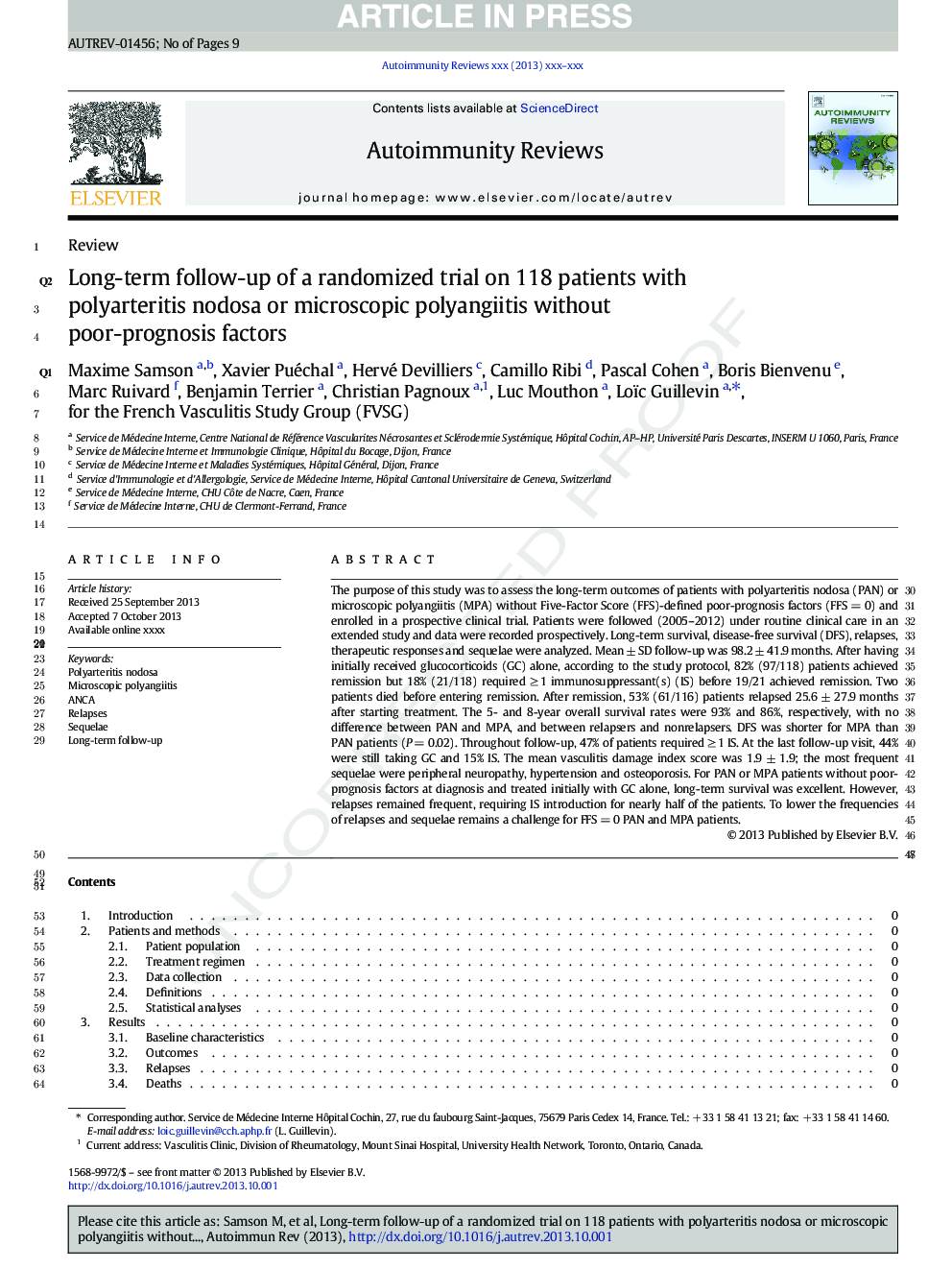| Article ID | Journal | Published Year | Pages | File Type |
|---|---|---|---|---|
| 6114573 | Autoimmunity Reviews | 2014 | 9 Pages |
Abstract
The purpose of this study was to assess the long-term outcomes of patients with polyarteritis nodosa (PAN) or microscopic polyangiitis (MPA) without Five-Factor Score (FFS)-defined poor-prognosis factors (FFS = 0) and enrolled in a prospective clinical trial. Patients were followed (2005-2012) under routine clinical care in an extended study and data were recorded prospectively. Long-term survival, disease-free survival (DFS), relapses, therapeutic responses and sequelae were analyzed. Mean ± SD follow-up was 98.2 ± 41.9 months. After having initially received glucocorticoids (GC) alone, according to the study protocol, 82% (97/118) patients achieved remission but 18% (21/118) required â¥Â 1 immunosuppressant(s) (IS) before 19/21 achieved remission. Two patients died before entering remission. After remission, 53% (61/116) patients relapsed 25.6 ± 27.9 months after starting treatment. The 5- and 8-year overall survival rates were 93% and 86%, respectively, with no difference between PAN and MPA, and between relapsers and nonrelapsers. DFS was shorter for MPA than PAN patients (P = 0.02). Throughout follow-up, 47% of patients required â¥Â 1 IS. At the last follow-up visit, 44% were still taking GC and 15% IS. The mean vasculitis damage index score was 1.9 ± 1.9; the most frequent sequelae were peripheral neuropathy, hypertension and osteoporosis. For PAN or MPA patients without poor-prognosis factors at diagnosis and treated initially with GC alone, long-term survival was excellent. However, relapses remained frequent, requiring IS introduction for nearly half of the patients. To lower the frequencies of relapses and sequelae remains a challenge for FFS = 0 PAN and MPA patients.
Related Topics
Life Sciences
Immunology and Microbiology
Immunology
Authors
Maxime Samson, Xavier Puéchal, Hervé Devilliers, Camillo Ribi, Pascal Cohen, Boris Bienvenu, Marc Ruivard, Benjamin Terrier, Christian Pagnoux, Luc Mouthon, Loïc Guillevin,
